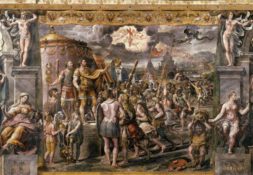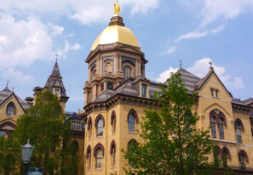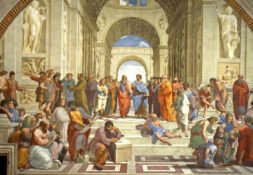Now that the Easter season is upon us once again, I am reminded of my Easter experience a year ago. This time last year, I was studying abroad for the spring semester in Toledo, Spain, when some friends and I took a trip to Rome, where we spent the Triduum as well as Easter Sunday.
It was an incredible weekend filled with many memories that are dear to my heart and more gelato than I am proud to admit. Rome is a city spilling over with history and beauty. It seemed as though every walk through the city and each turn of a street corner brought a new breathtaking sight before our eyes, but two moments in particular that weekend will always be responsible for shaping my understanding of the meaning of Easter.
The first moment was a trip to the Pantheon on Holy Thursday. The word “pantheon” comes originally from the ancient Greek, meaning something like “to all the gods.” The building itself, with its huge, concrete dome evocative of the spheres of heaven, was dedicated to the Roman gods, and has stood for centuries as a monument to Roman piety.
While inside the Pantheon, I was struck by the last thing our tour guide said to us before we made our way out. Every year, the Pantheon hosts a unique and famous celebration of Pentecost. The ancient tradition, dating back about 1,500 years, is known as “the rain of roses.” In this celebration, thousands of red rose petals are dropped into the Pantheon from its 40-meter-high open ceiling in a stunning, fluttering cascade, symbolizing the descent of the Holy Spirit upon the apostles.
Even though I didn’t actually see the celebration take place, the beauty of this practice was nonetheless irresistible to me. I was struck by the fact that the Pantheon, a structure originally built for the Roman gods, was now being used to worship and celebrate the one true God. Through the gift of Christ’s life and death on earth, this beautiful building has been made sacred, as it now serves a higher purpose in celebrating the loving presence of the Holy Spirit each year.
This theme continued the very next day at a Good Friday celebration of the Stations of the Cross with Pope Francis at the Colosseum. It was a wonderful celebration, and I was again struck by the Christian transformation this world-famous Roman landmark had undergone. In ancient Rome, the Colosseum was home to a large number of public exhibitions, the most famous of which were its violent and bloody gladiatorial contests. This amazing building was quite literally built for the purpose of suffering as spectacle, and yet on Good Friday, I found myself, along with tens of thousands of other pilgrims, celebrating the Stations of the Cross—contemplating the redemption of all suffering in Christ’s spectacle of self-emptying on Calvary.
My entire trip to Rome that weekend was filled with eye-opening moments in which I was able to witness the sanctification of Roman landmarks in action. By orienting their use toward liturgical practice, the Pantheon and the Colosseum are both standing witnesses to the ways in which God makes the unholy, holy.
This transformation from mundane to sacred lies at the heart of the Easter season. In the complete gift of His only Son, God takes the unholy parts of the world, of our lives, of our very selves, and loves them into holiness. God, on Easter, enacted the ultimate transformation of profane to sacred when He won victory over death with the sacrifice of His very Son, and thus forever transformed what it is to die. In that gift of self-emptying, Christ uplifted suffering from meaninglessness, taking it on Himself and redeeming it.
The resurrection was the ultimate act of sanctification, as it ushered in the salvation of mankind, and its effects are still spilling over and being played out all across the world: in the Pantheon, in the Colosseum, and in each of our lives.
Michael Infantine is a senior PLS major and Theology minor. He just bought some fun gray pants that he’s pretty excited about. If you like fun gray pants too, let him know at minfanti@nd.edu.





Leave a Reply